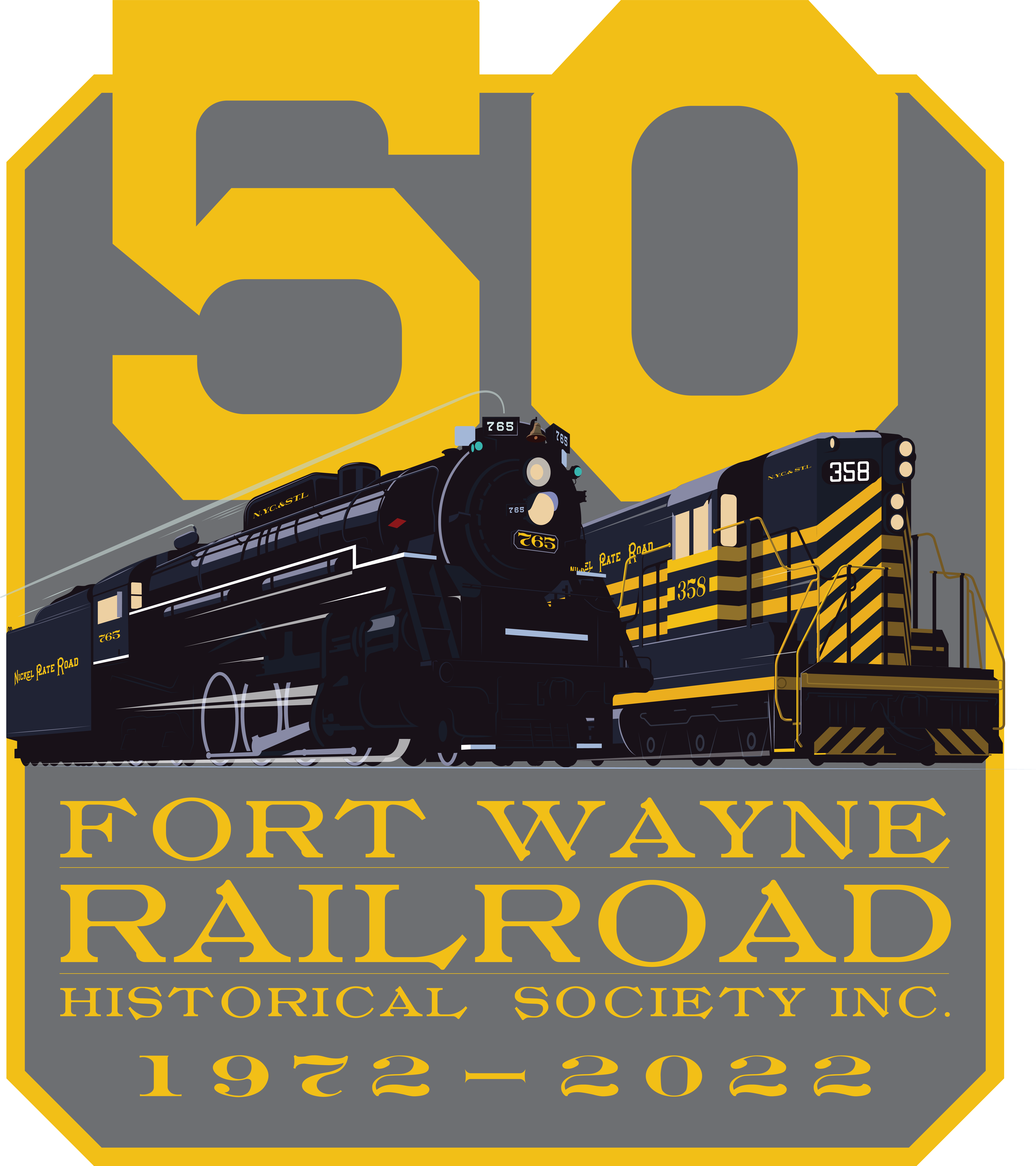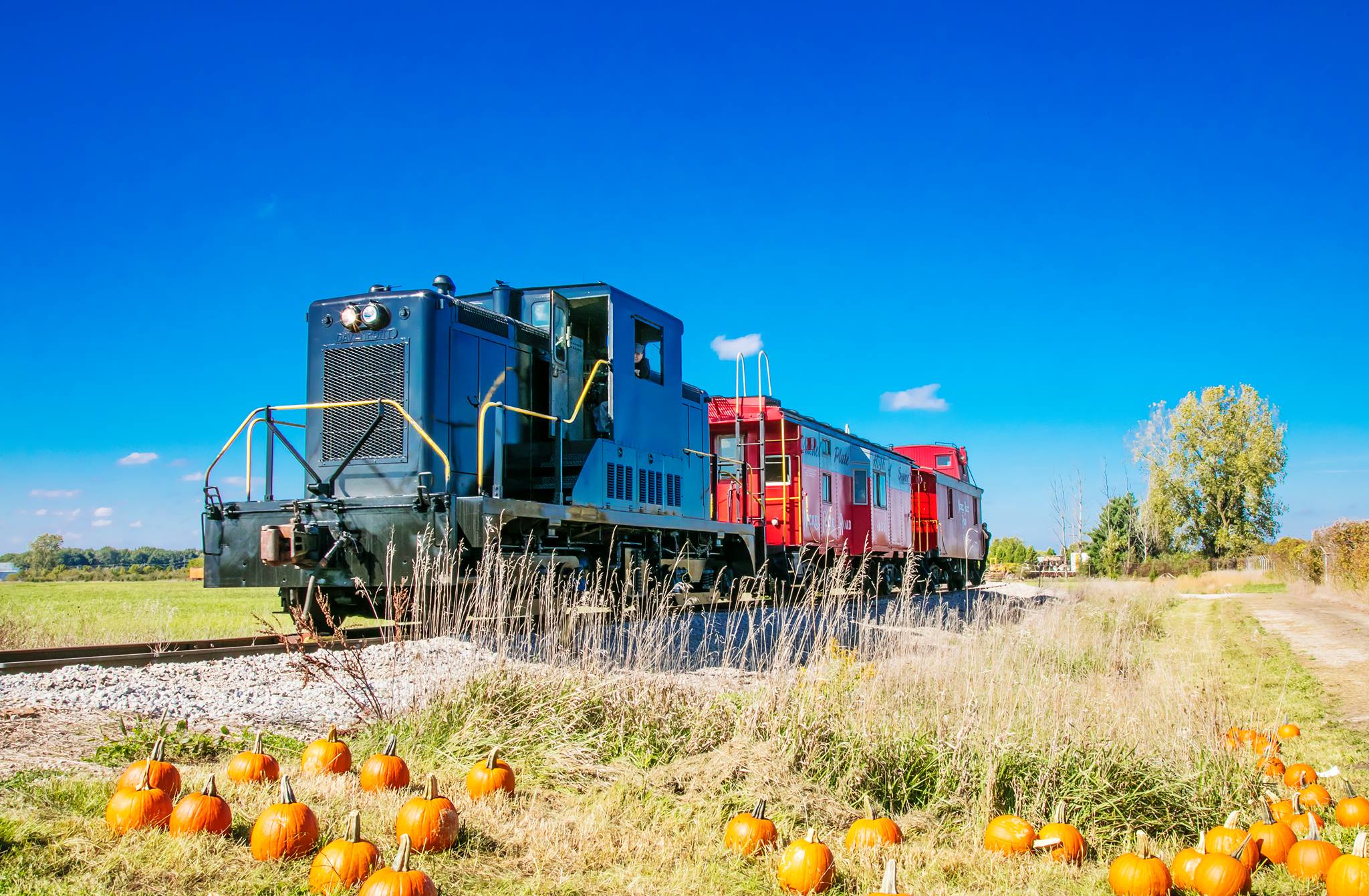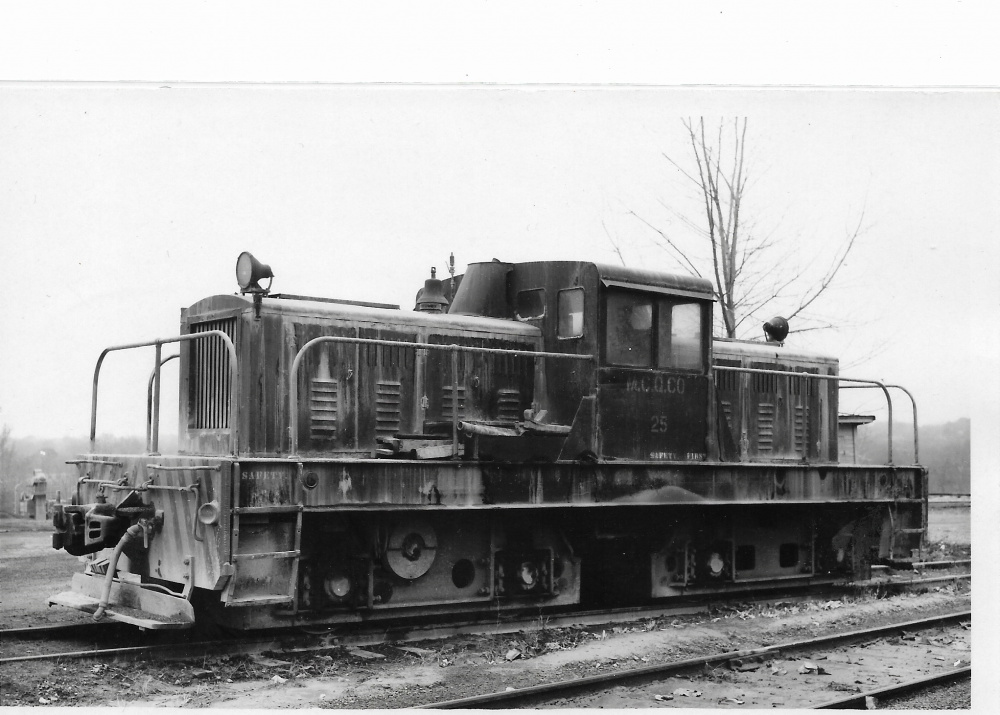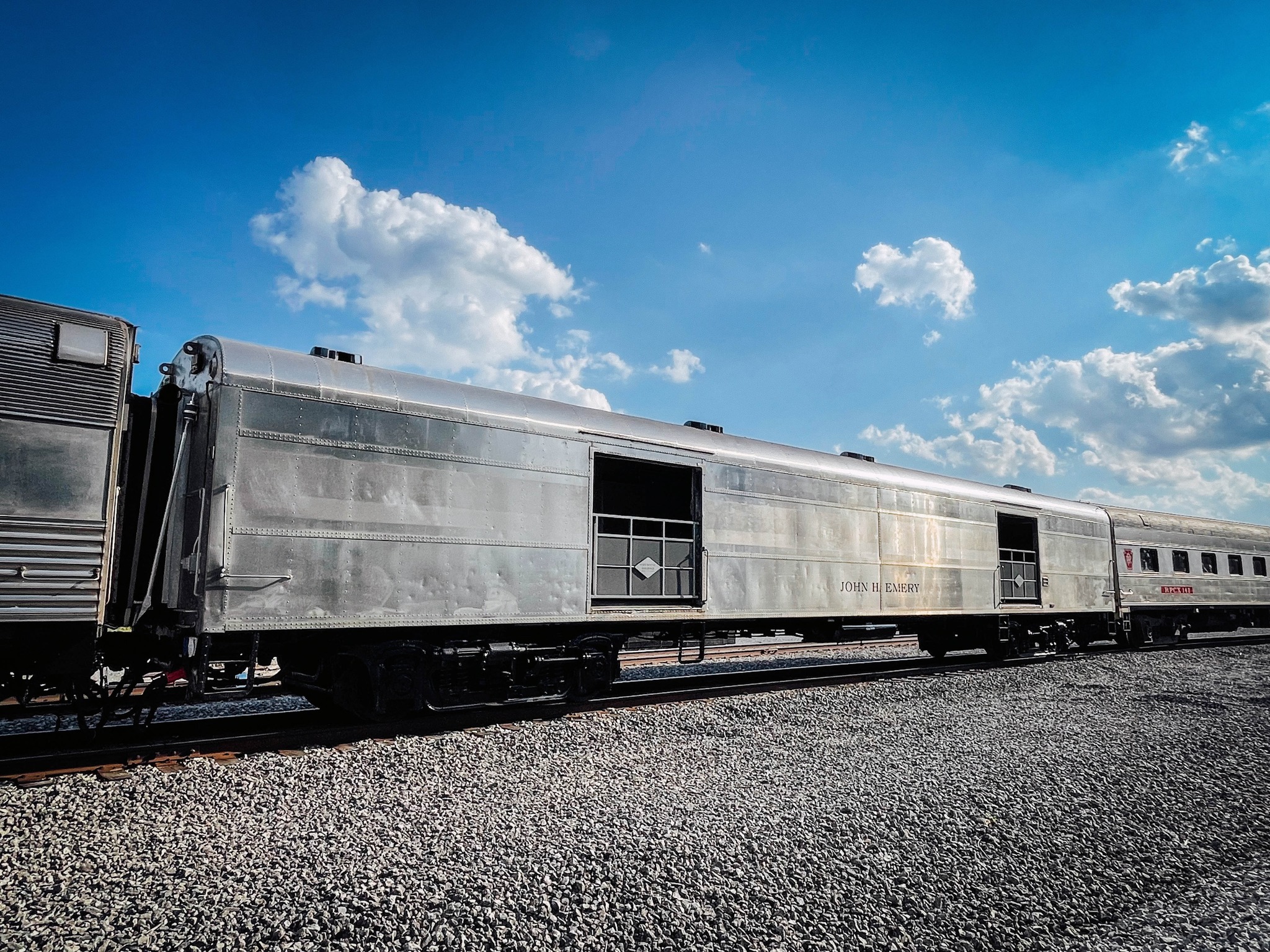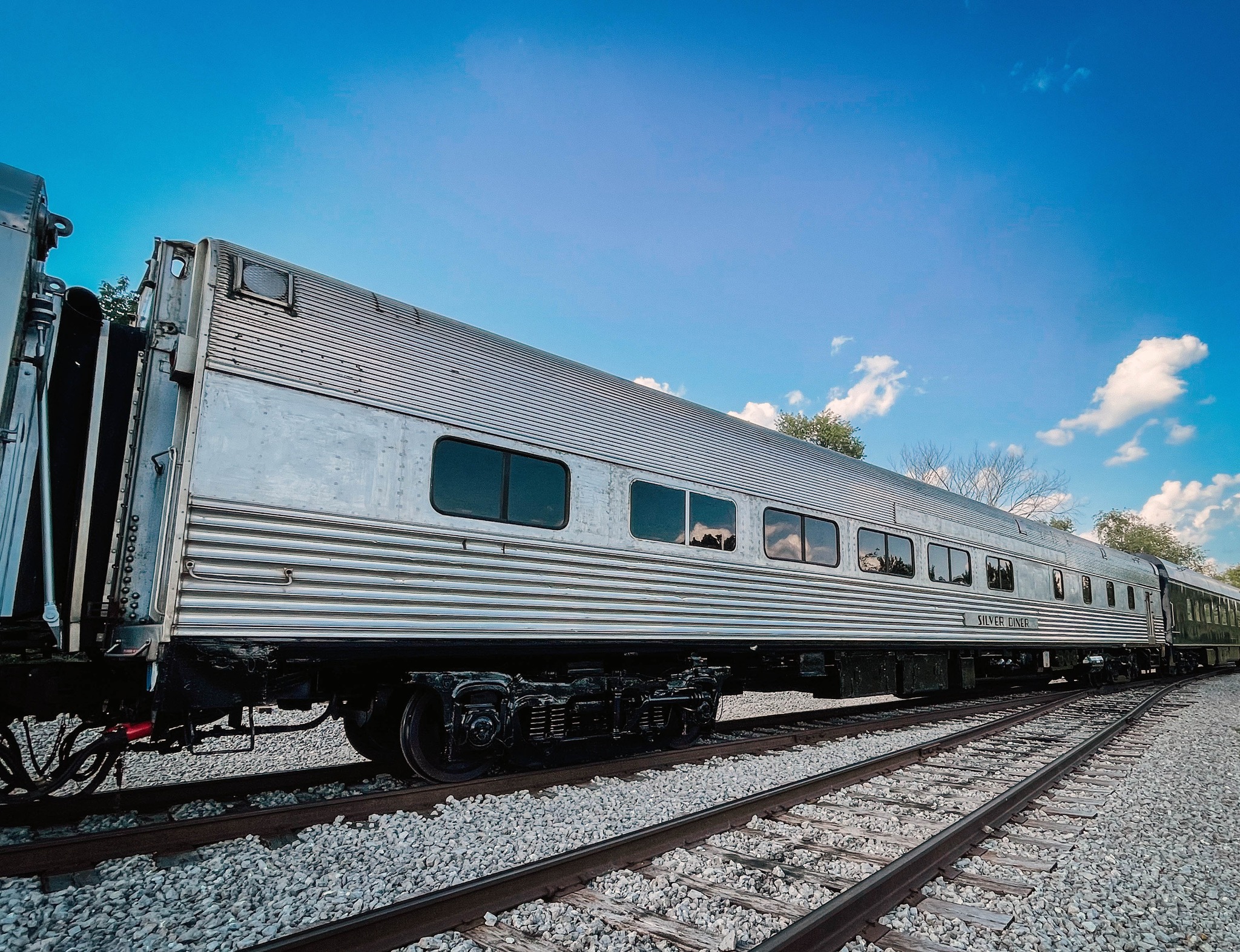NICKEL PLATE ROAD No. 765 – Steam Locomotive
Built for the New York, Chicago, & St. Louis Railroad (commonly known as the Nickel Plate Road or NKP) in 1944, no. 765 was constructed by the Lima Locomotive Works as one of eighty Berkshire-type locomotives ordered by the railroad. The Berkshire design was one of the most significant developments in locomotive technology during the 20th Century as it combined new technologies and steaming methods to simultaneously improve upon both speed and horsepower, permitting railroads to operate larger trains at higher, sustained speeds. The design relied on creating a new wheel arrangement and locomotive classification known as the 2-8-4: two leading wheels, eight main driving wheels, and four trailing wheels.
Designated a locomotive of the “S-2” class, the 765 commonly operated in freight and passenger service for the railroad between Chicago, Fort Wayne, and Bellevue, Ohio until June of 1958. It was last in service to provide power for a stranded passenger train in Fort Wayne that the following winter, making it the last Nickel Plate Road Berkshire under steam for the railroad.
During its time in service, no. 765 had earned the reputation as a dependable machine and was well-liked by local crews. As a result, the 765 was placed in store inside the East Wayne engine house in New Haven, Indiana until the early 1960s when it was selected by the railroad for donation and preservation to the City of Fort Wayne. In 1963, the locomotive was renumbered 767 for ceremonial purposes and installed in Lawton Park at the corner of 4th and Clinton Streets. By 1972, the condition of the locomotive had deteriorated and the Fort Wayne Railroad Historical Society was formed to preserve and eventually restore the locomotive to operation.
By 1974, the locomotive was removed from the park and was operational by 1979. Since then, it has served primarily in public exhibition and passenger excursion service through 16 states, racking up hundreds of thousands of miles, entertaining millions of people, and accomplishing numerous landmark achievements. In 2001, no. 765 underwent an $800,000 rebuild effort that was completed in 2005. Its next major overhaul is scheduled for 2031. For more information on the 765, click here.
